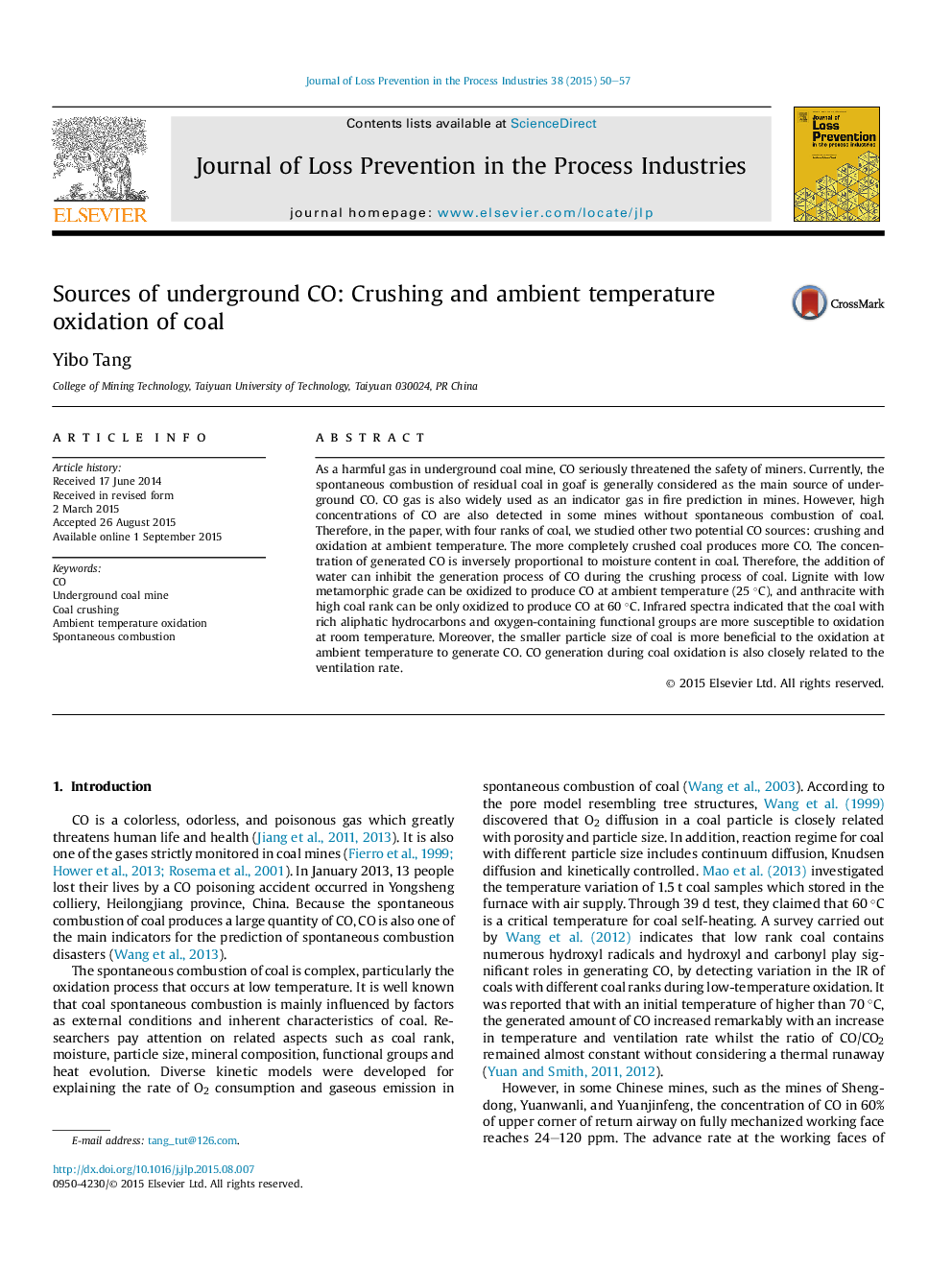| Article ID | Journal | Published Year | Pages | File Type |
|---|---|---|---|---|
| 585958 | Journal of Loss Prevention in the Process Industries | 2015 | 8 Pages |
•The crushing of generated CO is inversely proportional to moisture content in coal.•CO production via ambient temperature oxidation is influenced by temperature, particle size and ventilation rate etc.•Coal with rich aliphatic hydrocarbons and O-containing groups are more susceptible to oxidation at room temperature.
As a harmful gas in underground coal mine, CO seriously threatened the safety of miners. Currently, the spontaneous combustion of residual coal in goaf is generally considered as the main source of underground CO. CO gas is also widely used as an indicator gas in fire prediction in mines. However, high concentrations of CO are also detected in some mines without spontaneous combustion of coal. Therefore, in the paper, with four ranks of coal, we studied other two potential CO sources: crushing and oxidation at ambient temperature. The more completely crushed coal produces more CO. The concentration of generated CO is inversely proportional to moisture content in coal. Therefore, the addition of water can inhibit the generation process of CO during the crushing process of coal. Lignite with low metamorphic grade can be oxidized to produce CO at ambient temperature (25 °C), and anthracite with high coal rank can be only oxidized to produce CO at 60 °C. Infrared spectra indicated that the coal with rich aliphatic hydrocarbons and oxygen-containing functional groups are more susceptible to oxidation at room temperature. Moreover, the smaller particle size of coal is more beneficial to the oxidation at ambient temperature to generate CO. CO generation during coal oxidation is also closely related to the ventilation rate.
Graphical abstractFigure optionsDownload full-size imageDownload as PowerPoint slide
